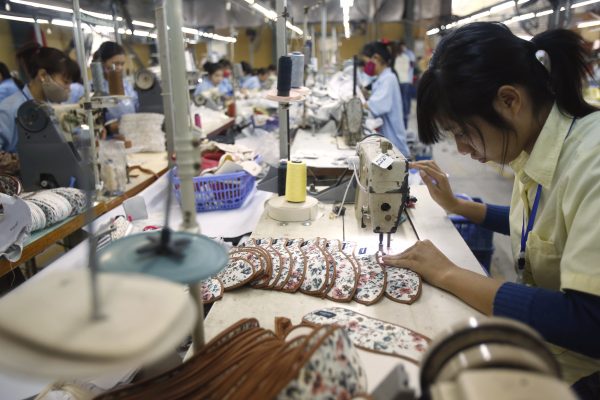At the 12th Party Central Committee in 2016, the private sector was officially confirmed as an important propellant of Vietnam’s socialist-oriented market-based economy. According to the White Book on Vietnam Businesses 2019, Vietnam had 714,755 active firms as of 31 December 2018 of which over 99 per cent are domestic or foreign-owned private enterprises.
The development of the private sector has two key effects on Vietnam’s government.
On the one hand, the development of the private sector is putting strong pressure on Vietnam’s government to be more transparent and effective. A continuing budget deficit has forced the government to encourage greater private sector participation in the provision of public services and infrastructure investment. As a result, public bidding documents and planning information — which were previously confidential — are now more accessible. Powerful associations of foreign private enterprises — such as EuroCham and AmCham — are also pressuring the government to speed up institutional reforms and improve the business environment.
Due to these changes, Vietnam’s score in the World Bank’s ease of doing business index has increased from 62.6 in 2016 to 69.8 (out of 100) in 2020.
Thanks to the development of the private sector, Vietnam’s public finance is becoming sounder and more sustainable. But state budget revenues from import-export duties — which accounted for 14.21 per cent of revenue in 2018 — are bound to decline in the future, as Vietnam signs on to several new free trade agreements with key trading partners. In this context, the private sector’s contribution to the state budget is expected to increase.
In 2018, the contribution of the private sector (not including foreign direct investment) to budget revenue was officially more than state-owned or foreign-owned private enterprises at 14.72 per cent (compared with 10.74 per cent for state-owned enterprises and 13.08 per cent for foreign-owned private enterprises).
The growth of the private sector has also been a key contributor to the development of Vietnam’s economy more broadly. In 2018, the private sector accounted for 42.1 per cent of GDP, compared to 41.74 per cent in 2017. According to the General Statistics Office of Vietnam, the private sector employs 83.3 per cent of the labour force. But the formal private sector, which consists of registered private companies with official business licences, contributes only 10 per cent to GDP — much less than the state sector. The private household (informal) sector is also much larger.
The development of the private sector does have its problems. The market is dominated by a few large private groups — Vingroup, Hoang Anh Gia Lai (HAGL), FLC Group — and the rest of the private sector is comprised of small and medium size enterprises. Several experts warn about the excessive use of financial leverage (borrowing too heavily). For example, HAGL Group is suffering under a huge debt burden while their core businesses are not performing well. If a large business group goes bankrupt, this will have adverse effects on the Vietnamese banking system. A ‘too big to fail’ attitude is becoming evident in many of these large Vietnamese private sector groups.
The prevalence of small and medium size enterprises has also resulted in low labour productivity due to a lack of incentives to invest in advanced technologies. In 2018, labour productivity measured as output per employed person per year in the domestic sector was lower than in any other sector of the economy at 228.4 million dong (US$9813), compared with 678.1 million dong (US$29,136) for the state-owned sector and 330.8 million dong (US$14,213) for the foreign sector.
In addition, there are not close links between foreign-owned private enterprises and other sectors in the economy. Most foreign enterprises investing in Vietnam use inputs from international suppliers and export their products overseas. The involvement of domestic firms in these value chains has been minuscule. Domestic value-add for electronics, for example, is in the low single digits.
If wages continue to increase faster than productivity growth in the next decade, Vietnam will confront a shift of foreign enterprises away from Vietnam to other countries at the expense of millions of domestic workers who work in the production process.
Vietnam is stuck in a dilemma. In the early 2000s, Vietnam’s industrial policy failed to transform state-owned enterprises into large international conglomerates. With uncertainty surrounding the efficiency of some of the larger private firms, it is not easy for Vietnam to pick one sector as a development priority.
To achieve its goal of escaping the middle income trap and building a prosperous nation by 2045, Vietnam should shift from a ‘picking the winners’ approach to one that promotes a fair and competitive business environment, so that a ‘level playing field’ can be established for all sectors to compete in.
Vo Xuan Vinh is Professor of Finance and Dean of the Institute of Business Research, University of Economics Ho Chi Minh City.
Chu Duc Manh is a research associate at the Institute of Business Research, University of Economics Ho Chi Minh City.

